Meet the Chair's Council Members
Larry R. Avens, Ph.D.
Larry R. Avens received his B.S. (1978) degree in chemistry from Tennessee Tech University and a Ph.D. (1982) from Texas Tech University. His graduate work involved the synthesis and reactivity studies of a number of volatile, air sensitive phosphorus and arsenic compounds. He owes a great debt of gratitude to his undergraduate faculty advisor, Dr. Thomas Furtsch, and his graduate advisor, Dr. Jerry Mills.
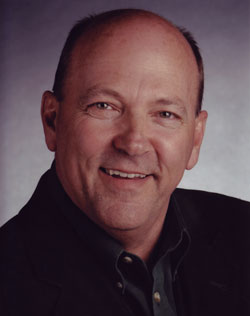
Following graduate school, Avens went directly to Los Alamos and spent most of his career at the Los Alamos National Laboratory plutonium facility studying basic and applied chemistry of the actinide elements. Avens has 24 papers in the chemistry, chemical separation and physical separation of the actinide elements and 4 patents. From 1994 through 2000, Avens managed the research group at the Los Alamos plutonium facility. This group designed, fabricated, and installed the ARIES pit (plutonium containing “sparkplug”) disassembly system, a model for development of the American and Russian systems for nuclear weapon pit disassembly. In 2000, Avens moved to the Nonproliferation and International Security Division where he led the Fissile Material Transparency Technology Demonstration at Los Alamos, where radiation measurements were taken on an American nuclear weapon component in the presence of a Russian Federation Delegation.
Today, Avens is a Program Manager in the International Technology Program Office, part of the Threat Reduction Directorate of Los Alamos National Laboratory. Capabilities represented by this office include nuclear material control, radiation measurement, and detection and characterization of nuclear, biological and chemical (NBC) materials. These skills are used to safeguard NBC materials in the U. S. and abroad.
David A. Babb, Ph.D.
David A. Babb received his B.S. (1982) and his Ph.D. (1985) in chemistry from Texas Tech University. He hired into The Dow Chemical Company upon graduation, and remains there today.
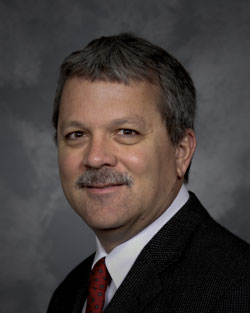
In the twenty-two years since graduation, Babb has worked in product and process development research for advanced materials in electronics, fluoropolymers, polyolefins, metallocene and Ziegler-Natta catalysis, and many aspects of Polyurethane technology. Babb was promoted to Corporate Scientist in the Polyurethanes business in 2004. He holds thirty-two patents, ranging across product compositions, applications, and process technologies, with several more applications currently in prosecution. He is also the author of forty external publications.
Babb's current research involves the development of alternative and renewable feedstocks for the petrochemical industry, and their use in the preparation and application of polyurethane polymers. He actively lectures on the topic in both academic and industrial technology forums.
Thomas D. George, Ph.D.
Thomas D. George graduated with a B.S. (1962) in chemistry from Texas Tech University then spent a year at the University of Liverpool, England, studying polymer chemistry on a Rotary International Scholarship. George returned to Texas Tech for an M.S. (1965) in physical chemistry and then earned his Ph.D. (1968) in materials science from Northwestern University.
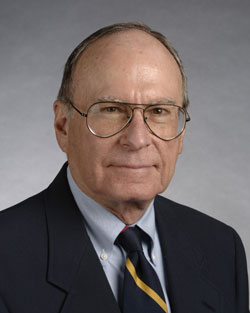
After Ph.D. graduation, George went to Texas Instruments to head the Radio Chemistry Laboratory, studying impurities in electronics-grade silicon. He managed an Analytical Chemistry Laboratory in the Semiconductor Group, responsible for chemical purity and troubleshooting in the semiconductor manufacturing process. He then became the Manager of Process Control, overseeing the integrity of the manufacturing process from silicon production to product packaging. George transferred to the Consumer Products Division (formed to manufacture the newly invented hand held calculator) as Manager of Quality Control, moving the operation to Lubbock as site manager. He then moved to Motorola in Phoenix to join their Semiconductor Products Operation, in charge of Assemble and Test Operations, overseeing factories in Asia, Mexico, and the United States. He later became the General Manager of the Bipolar Integrated Circuits Division, responsible for design, production, research and sales of bipolar logic and analog integrated circuits.
George's final assignments at Motorola were in Office of the General Manager of the Semiconductor Products Sector, first as Assistant General manager with responsibilities for the business worldwide for seven years and then as General Manager, with total responsibility for a business with revenues of over $8 billion.
Michael L. Gilbert, Ph.D.
Michael L. Gilbert received his Ph.D. (1989) in agronomy from Texas Tech University. Gilbert's primary research during the time of his education and over the years as a plant breeder and geneticist has been in the area of genetic development for yield as well as production under abiotic drought stress.
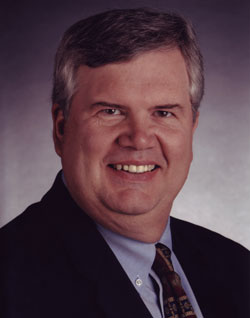
Gilbert has spent twenty-five year in the commercial seed and biotech trait business working for Cargill, Bayer and predecessor companies. Currently supervising the global cotton business for Bayer CropScience, Gilbert supervises scientists, agronomists, and business people in ten countries around the world. Principal research areas at this time include abiotic stress, plant water use efficiency, insect resistance, traditional fiber development, bio-engineered fiber development, herbicide tolerance, and molecular market development.
Gilbert currently serves on the Board of Directors of the Texas Seed Trade Association. He is a member of the American Society of Agronomy, and the Crop Science Society of America. Gilbert has been an adjunct professor at Texas Tech and has served on advisory boards at Texas Tech and West Texas A&M.
Richard D. Goodin, Ph.D.
Richard D. Goodin received his B.S. (1967) and M.S. (1969) degrees in chemistry from Texas Tech University working with Dr. Henry Shine and a Ph.D. (1975) in organic and analytical chemistry from the University of Texas at Austin working with Dr. Allen Bard and Dr. John Gilbert.
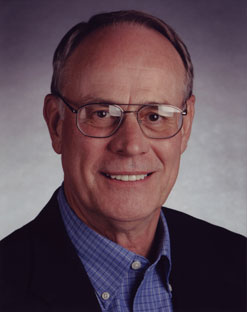
After a post-doctoral appointment at Columbia University in New York City with Dr. Ronald Breslow, Goodin joined the Corporate Research Department at Monsanto specializing in organic electrochemistry. Goodin was employed by Monsanto Company in St. Louis for 23 years. He served in numerous roles at Monsanto beginning with bench chemist and progressing through technical management responsibilities and staff positions. His last position before joining SACHEM was External Technology Director in the Sustainable Development organization. This incubator group was chartered with identifying new business opportunities based solely on the driver of sustainable development.
Goodin has served as Vice-President of Technology for SACHEM in Austin since 1999. In addition to managing the process technology and new product development efforts, he has initiated two new business development programs in Electronic Materials and Bioprocessing.
David E. Harwell, Ph.D.
David E. Harwell graduated from Texas Tech University with both B.S. (1989) and Ph.D. (1993) degrees in chemistry. Graduate work under the direction of Drs. Jerry Mills and John Marx concentrated on the synthesis and characterization of tripodal phosphine oxides for extraction of actinides and lanthanides from nuclear waste streams.
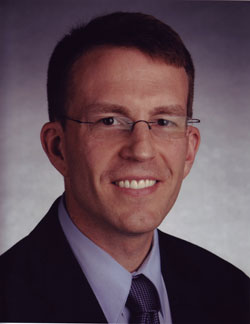
Harwell did postdoctoral with then editor of Inorganic Chemistry, M. Frederick Hawthorne, at UCLA, he synthesized a series of metallocarboranes which were coupled with monoclonal antibodies for radioimmunodetection and radioimmunotherapy of breast cancer. Additional metal carborane complexes of bis-ortho-carborane were synthesized and studied to elucidate bond strengths of metal-metal interactions. One golden example of this work still maintains the record for the strongest documented aurophilic interaction.
Today he is an Assistant Director in the American Chemical Society (ACS) Division of Membership & Scientific Advancement, with responsibility for the Department of Career Management and Development. His primary concern is the employability and economic well being of Society members. Before joining the staff of the ACS, Harwell was an Assistant Professor in the Chemistry and Biochemistry Department of the University of Hawaii where he conducted research in the areas of main-group inorganic synthesis and silicon-based nanomaterials. He was a co-founder of the Hawaii Advanced Nanotechnology Alliance where he worked with an interdisciplinary team of scientists to construct silicon nanoparticles for medical and electro-optical applications.
William R. Heineman, Ph.D.
William R. Heineman received his B.S. (1964) from Texas Tech University and his Ph.D. (1968) in analytical chemistry from the University of North Carolina at Chapel Hill working with Professor Royce Murray. He was a Research Chemist at Hercules Research Center before becoming a Postdoctoral Research Associate with Professor Ted Kuwana in 1970 at Case Western Reserve University and The Ohio State University. He joined the faculty at the University of Cincinnati in 1972 where he is now Distinguished Research Professor.
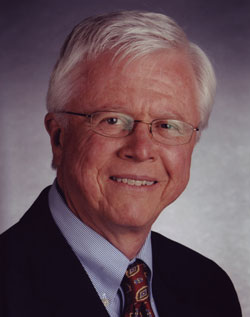
Heineman's research interests include spectroelectrochemistry, chemical sensors and biosensors, electrochemical immunoassay, and microfluidic systems for chemical analysis. He has published over 380 papers and is coauthor of Chemical Experiments for Instrumental Methods and Chemical Instrumentation: A Systematic Approach, and is coeditor of Laboratory Techniques in Electroanalytical Chemistry.
Professor Heineman has received numerous scientific and teaching awards, including the Sigma Xi Research Recognition Award, Japan Society for the Promotion of Science Fellowship, Japanese Government Research Award for Foreign Scientists, George Rieveschl, Jr. Award for Distinguished Scientific Research, Humboldt Preis from Germany, Hans H. Jaffe Chemistry Award, Charles N. Reilley Award in Electroanalytical Chemistry, Chemical Sensors Award from the International Meeting on Chemical Sensors, Award for Excellence in Teaching from the ACS Division of Analytical Chemistry, Torbern Bergman Medal from the Swedish Chemical Society, Eastern Analytical Symposium Award for Outstanding Achievement in the Fields of Analytical Chemistry, and Outstanding Achievement Award of the Sensors Division of the Electrochemical Society. He is a Fellow of the American Association for the Advancement of Science.
Jack H. Henry, M.D.
Jack H. Henry received a B.A. (chemistry) from Texas Tech University in 1960. He was elected president of the student body of the U.T. Medical Branch in Galveston before graduating in 1964. After an internship at Baylor and surgical residency at the Penn, he did an orthopaedic surgery residency at the New York Orthopaedic Hospital at Columbia University. After Air Force service he received a fellowship at Auburn University to study sports medicine.
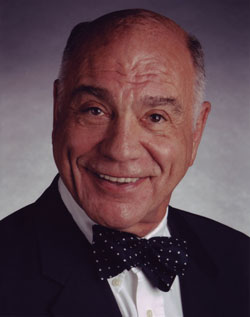
Henry returned to Columbia University when the FDA released methyl methacrylate for total hip replacement. He was awarded an Annie C. Kane Traveling Fellowship to England and to Dundee, Scotland. When Henry returned to Texas, he began private practice and a professorship in orthopaedic surgery at the UTSA, becoming the orthopaedic surgeon for the San Antonio Spurs for over two decades. He served as President of the NBA Physicians, the Herodicus Society, and the Southern Orthopaedic Society. In 1988 he was recognized as an Outstanding Alumnus of TTU. Dr. Henry returned to Columbia Presbyterian Medical Center in 1993, and was elected Outstanding Professor of the Year in 1999, the first orthopaedic surgeon to receive that honor.
Henry recently returned to Texas Tech University as a professor of orthopaedic surgery, with fields of interest in sports medicine and total joint replacement. He is an orthopaedic surgeon for the Red Raider football program, and currently serves on the Texas Medical Association Foundation, the TMA Executive Committee, and the National Board of Councilors for the American Association of Orthopaedic Surgeons.
Richard A. Kemp, Ph.D.
Richard A. Kemp received his B.S. (1978) from Texas Tech University working with Professors John Marx and Jerry Mills. The synthetic projects in Professor Mills' group sparked his interest in inorganic chemistry, and in 1981 Kemp received a Ph.D. in inorganic chemistry with Professor Alan H. Cowley, at The University of Texas, Austin.
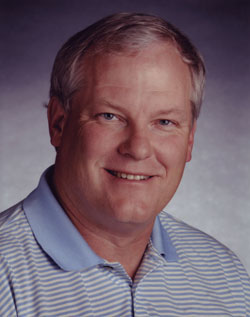
Desiring a career in industry, Kemp spent the next twenty years working in industrial catalytic chemistry, with the majority of his time spent at Shell Development Company. While at Shell (1983-1996) he developed catalysts for oil hydroprocessing, alkene oligomerization and polymerization, alcohol oxidation catalysts, and the work for which he is most known – the invention and development of high selectivity catalysts for ethylene epoxidation, a catalyst system currently used worldwide to produce multi-billions of pounds of ethylene oxide each year. In 1996, Kemp moved to Union Carbide (now Dow) and began working on Ziegler-Natta polymerization catalysts, achieving commercial successes with improved high-selectivity catalysts to make polypropylene. During his time in industry, Kemp was the inventor on approximately 70 patents. In 2001, he returned to academics, taking the dual positions of Professor of Chemistry at the University of New Mexico, and Principal Member of the Technical Staff, Sandia National Laboratories, Albuquerque, New Mexico.
Kemp's current interests include conversion of carbon dioxide into useful products and efficient use of oxygen as an oxidant in organic transformations. Unquestionably, the fundamental training in chemistry that he obtained at Texas Tech has been of major importance during his career.
Barbara A. McDougal, Ph.D., M.D.
Barbara A. McDougal received her B.A. (1959) in chemistry and her M.S. (1965) in biology at Texas Tech University. After graduation, she taught high school science, college biology, graduate physiology, and medical training. McDougal completed her Ph.D. (1969) in physiology at the University of Kansas where her research interests included cell transport mechanisms using physiology and biochemical techniques.
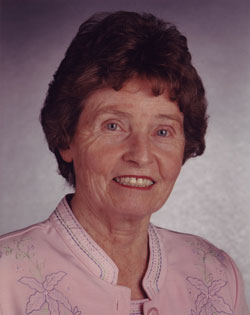
After medical school at the University of New Mexico (1972), McDougal returned to Kansas for training in internal medicine and nephrology. She remained on the faculty to work in research, patient care, and training programs in dialysis and kidney transplants. Later, McDougal practiced medicine in Chickasha, Oklahoma where she was active in several state health committees and in state medical societies and boards, as well as in preceptor programs with the Department of Medicine at Oklahoma University. She was named one of the states outstanding women by Oklahoma Monthly.
In 1983, McDougal returned to Lubbock where she continued to be active in medical practice and teaching internal and emergency medicine. During this time, she was involved with various aspects of emergency medicine courses including pre-hospital life support, advanced cardiac life support, South Plains EMS board, and rape crisis. A variety of interests outside of medicine has balanced her work, include the YWCA board, Mortar Board and Pi Beta Phi. McDougal is a retired physician of internal medicine, nephrology, and emergency medicine.
William R. Robinson, Ph.D.
William R. Robinson received his B.S. (1961) and M.S. (1962) degrees in chemistry from Texas Tech University and his Ph.D. (1966) from the Massachusetts Institute of Technology, followed by a National Science Foundation Postdoctoral Fellowship at the University of Sheffield.
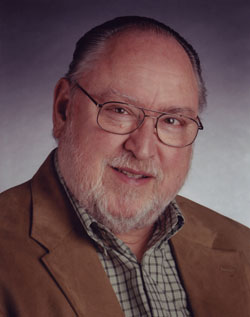
Robinson joined Purdue University in 1967 as an inorganic chemist and crystallographer and is now a Professor of Chemistry and Science Education. Robinson has published 50 papers dealing with organometallic compounds and solid state chemistry. He has served as Associate Head of the Chemistry Department, Director of General Chemistry, and Chair of the Department's Chemical Education Division. Robinson became a co- author on five editions of the Holtzclaw/Nebergall/Robinson general chemistry text in 1978. He coauthored a short general chemistry text, Chemistry: Concepts and Models, and collaborated in writing Teaching General Chemistry: A Materials Science Companion. These projects extended his view of chemical education activities beyond teaching and he became active in other aspects of chemical education. He published his first chemical education research article in 1992, and he now has 24 publications and has presented over 100 talks in chemical education.
Robinson served on the American Chemical Society's Exams Institute's General Chemistry Examination Subcommittee three times, helped developed the first ACS chemistry conceptual examination, and chaired the committee that wrote the 2001 conceptual exam. He wrote a regular column for the Journal of Chemical Education summarizing the science education research literature. In 2002, Robinson served as Chair-elect of the ACS Division of Chemical Education and subsequently served as Chair and past Chair.
Jeffrey W. Seale, Ph.D.
Jeffrey W. Seale received his B.A. (1988) in Biochemistry and Ph.D. (1992) in biochemistry from Texas Tech University. Upon graduation, he joined the laboratory of George Rose at Washington University School of Medicine, St. Louis, where his work extended the classical definition of protein α-helices to include residues flanking the traditional helical boundaries.
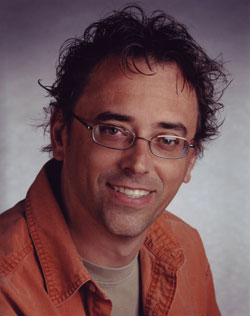
Seale extended his postdoctoral protein folding studies in the laboratory of Paul Horowitz at the University of Texas Health Science Center, San Antonio, as a Robert A. Welch fellow. During his time in the Horowitz lab, Jeff studied the folding of protein chaperones. After completing his postdoctoral studies Seale joined Monsanto Company in St. Louis where he established the protein engineering program in the Disease Control group. His efforts in protein engineering were rewarded with a Monsanto Above and Beyond Award.
After successfully engineering a group of lead proteins, Seale joined the protein engineering group in Insect Control, where he applied his expertise to the design and mode of action of insecticidal protein toxins. Seale was promoted to Team Lead for Protein Design for the Biotechnology organization. He is currently is expanding the application of protein design to lead proteins in all areas of the company pipeline. Seale's work is represented in 11 peer-reviewed publications, 2 book chapters, 2 United States patents, and several patent applications.
Department of Chemistry & Biochemistry
-
Address
1204 Boston Avenue, Lubbock, TX 79409-1061 -
Phone
806.742.3067
